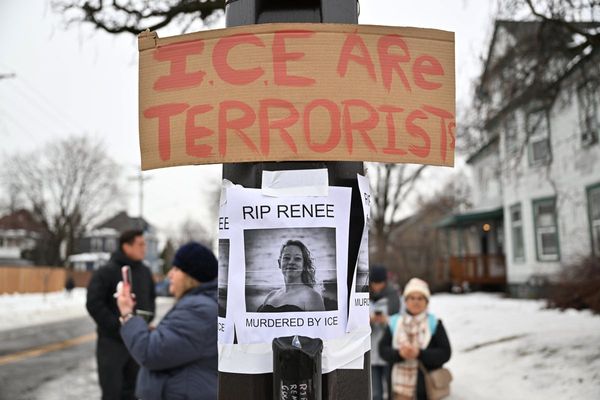
Aboriginal and Torres Strait Islander readers please note that this article mentions deceased persons.
First Nations educators from around the country launched a landmark review today calling for national reform of Australia’s education system. At its core is recognition and resourcing of a First Nations model of education called Apmerengentyele (Ap-mer- ung-n-jel-a), meaning “from the land”.
“The Steiner schools, the Montessori schools, the Catholics, the Lutherans — every other organisation in Australia has had an opportunity to develop a system. First Nations have not,” Gunggari woman Stacey Campton, director of First Nations education organisation Children’s Ground, tells Crikey and reporting partner Indigenous Community Television (ICTV).
“If we’re going to have a Voice to Parliament, if we’re going to get a referendum, then one of the biggest, boldest reforms that we would like to see come forward is the investment in a First Nations education system. Minister Burney has called for bold reforms. Well, here’s one for you.”
More than 50 First Nations educators are stationed at Ross River Resort, about 80km east of Mparntwe (Alice Springs), for day three of four of Utyerre Apanpe (oo-cherra a-parn-pa) — an annual Black-only First Nations education conference convened by Children’s Ground that’s doubling as the launch site of “The MK Turner Review”.
Named after the late Arrernte Elder, professor, artist, author, language speaker, teacher and founding director and cultural authority at Children’s Ground, Dr MK Turner OAM, the review is a policy document born out of four years of Utyerre Apanpe and input from more than 60 First Nations educators. It’s half a decade in the making and synthesises half a century of knowledge sharing, discussion, consensus and international evidence on the need (and right) for a standalone First Nations system of education.
Campton is clear: First Nations people do not want a First Nations “add-on or bolt-on” to the existing Western model of education. They want a “completely separate system” that acknowledges and privileges a First Nations way of thinking and learning.
In short, education led, designed, delivered and run by First Nations peoples for First Nations peoples, with language, culture and Country — not classrooms — at its core.
“It’s an entire system change to the status quo of having a classroom, a teacher, someone who doesn’t even understand who you are or even speak the language that you speak,” founding chair of Children’s Ground and 2023 Male Elder of the Year, Arrernte man William Tilmouth says.
The four-day conference is exclusive to First Nations peoples, but Crikey and ICTV have been given permission to attend and report on the diversity of First Nations voices calling for collective upheaval of the education system in person and on paper.
The review is clear: a Western model of education is not made for First Nations peoples.
As it stands, a migrant child in Australia is far more likely to learn in their first language at school than an Indigenous child. That’s despite international evidence from UNESCO in 2012 and the World Bank in 2021 (along with a long list of national reviews) that learning in first language and in First Nations ways improves not only education outcomes but also health, economic and social metrics for Indigenous peoples.
“The World Bank has basically caught up with what Dr MK Turner was saying 30 years ago,” CEO of Children’s Ground Jane Vadiveloo says. “There’s nothing new in this; it just hasn’t been done in Australia.”
Looking overseas, Aotearoa New Zealand and Hawaii have done it for more than 40 years. Back home, First Nations peoples have practised it for millennia and called for it since colonisation. In the ’70s there was a formal roll-out of bilingual First Nations education, but this was later gutted by funding cuts. Vadiveloo says “It’s time for a change” and Apmerengentyele is that change.
The review recommends that the Australian government commit to this standalone system and support a First Nations workforce to service it. Key to this is the establishment of First Nations language and literacy centres, as well as a national First Nations knowledge hub — the MK Turner Institute.
Tilmouth hopes the review will open the eyes of politicians, educational institutions and teachers across the nation to the power of a First Nations model of education. He wants them to read it, listen to it and then “do something about it”.
“This is not willy-nilly, pie-in-the-sky stuff. This is real. This is the reality of our existence and if we lose that it’s gone forever,” he says.
“No longer do we sit back and take prescribed solutions; no longer do we sit back and take the solutions of people who designed them who sit in Canberra, who know nothing about us.
“We have our solutions; we have our answers; we need to be heard. And that’s what Children’s Ground is all about, empowering people to have that voice to be able to speak up and do it their way.”







